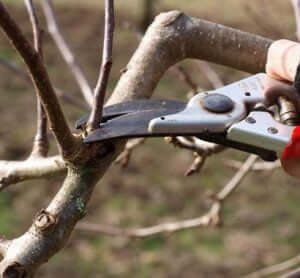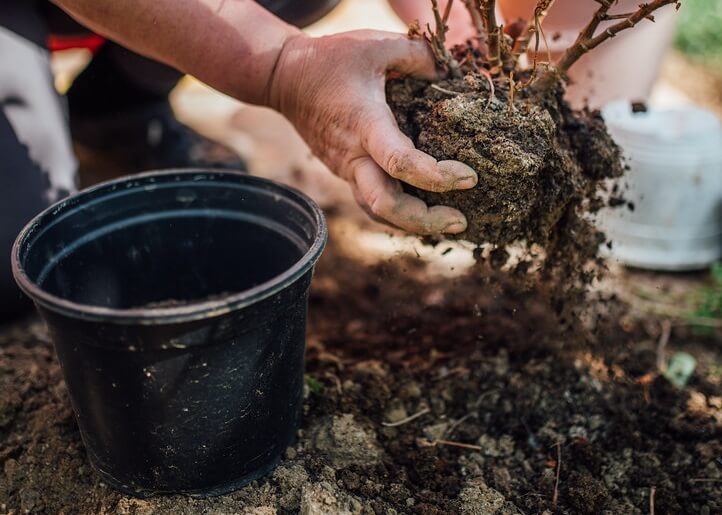Winter Gardening Tips
Even thought winter has finally arrived there is still plenty that can be done and also plenty that you should be doing during the winter months.
Feed Your Garden With Compost This Winter
- One such task is to fertilize the whole garden with compost. This can be achieved by spreading a 5cm thick layer of compost over the entire garden area.
- You can feed your plants simultaneously by applying an organic 2:3:2 fertilisers together with the compost. Take care not to damage roots by working the compost too deep in to the soil. Between trees and shrubs a depth of –7cm is ample and for ground covers it will be fine to spread it over the service.
Prune and Transplant In The Cooler Temperatures of Winter
- Pruning and re-planting are two main chores that should be done during winter. Since plants are in a phase of rest during this time and are growing slower this is the best time for pruning and re-planting. (Dont prune during winter in frost prone areas)

See here a list of reasons why you should consider pruning in winter:
- Prune plants to clean the plants of any dead wood. Often plants will get too thick and untidy with too much dead wood in between. Now is the best time to clean up those untidy branches.
- Prune plants for shaping. Often trees and shrubs will get too big or grow in the wrong direction and so now is the perfect time to shape them by pruning or to remove unwanted or unsightly branches. Reducing branches will also take away any strain and allow the plant to develop strong roots.
- Prune plants to encourage new growth, fruit and flowers. Roses, fruit trees and Hibiscus are three types of plants that respond well to pruning and will only flower when pruned. This will encourage new growth, more flowers and thus more fruit.
Winter is the best time for re-planting. Below is some useful tips for when you need to transplant.
- First reduce the plant to make it more manageable by pruning away a third of the plant and also remember to water the plant thoroughly after planting. Pruning will also help the plant cope with the stress of re-planting.
- After pruning you can determine to size of the root system by following the drip line. The drip line will more or less indicate to you the size of the root system and this will indicate to you how big the new hole should be. Keep in mind that the strength of a plant is in its root system and your rate of success will be greater the less you disturb the roots and the faster you can transplant the plant.
- To lift the plant, dig right down in to the soil. Gently lift the plant with a spade without loosening or removing the soil around the roots and move the plant to the new area.
- Transplant the plant to its new hole and ad a mixture of compost and bone meal. Water thoroughly and remember to water every 5 days.
South African Winter Gardening Tips
Winter Garden with Compost and Mulch: Enhance soil health during winter by adding compost. Follow this with a layer of mulch to insulate plant roots, conserve moisture, and protect against frost damage.
Watering in Winter: Adjust your watering regimen in winter. Plants generally require less water due to reduced evaporation rates and slower growth. Watering in the morning is ideal to prevent overnight freezing.
Frost Protection in Winter: Use frost cloth or burlap to cover sensitive plants during cold snaps. Moving potted plants to sheltered areas can also protect them from frost damage.
Winter Gardening with Vegetables: Utilize winter gardening for growing cool-season vegetables such as carrots, spinach, and broccoli. These crops can tolerate the colder temperatures of the South African winter.
Indoor Winter Gardening: For plants sensitive to cold, consider indoor gardening. This can include using a greenhouse or growing plants in containers inside your home.
Winter Garden Planning and Maintenance: Use the quieter winter months for garden planning and maintenance. Repair and organize garden tools, plan spring planting, and assess the overall health of your garden.
Winter Gardening Wildlife Care: Support local wildlife by providing bird feeders and fresh water sources. This not only helps the birds but also encourages them to visit your garden, aiding in natural pest control.
Soil Health in Winter: Test your soil during winter to prepare for spring planting. Amend the soil as needed based on the test results to ensure optimal growth for plants in the coming season.
Pest Control in Winter: Monitor for pests and diseases, which can be active even in winter. Early detection and treatment are key to preventing spring outbreaks.
Caring for Perennials and Bulbs in Winter : Protect perennials with mulch and plant spring-flowering bulbs such as daffodils during the winter months.
Happy gardening.
JJ van Rensburg



